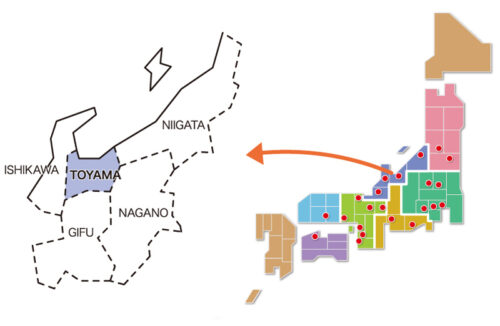Toyama Region

Specialising in high-stretch fabrics
The Toyama textile region in the Hokuriku District, has a long history of weaving silk, cotton and linen, going back even before the time of Meiji (1868-1912). Anchored by this trio, it expanded the reportoire further to also produce synthetics and knitwear fabrics. Knitting got a foothold here after tricot knitting machines were introduced in the 1930s, with production gaining further ground from the 1950s onward, when the high-stretch qualities of warp knits lent themselves to wider applications. These ranged from swimwear, leotards and sportswear right up to industrial materials of all kinds (car seats, construction and interior decor). The number of warp-knitting machines installed here, which comprises half the entire total in Japan, reflects the mastery of this niche domain. And having a one-stop venue within the region for all production processes: weaving and knitting, dyeing, sewing and finishing, is also a benefit.
Their specialised tricot products retain all the well-known knit pluses: remaining stretchable and breathable, retaining a tensive or stiff feel and morphologically stable at the same time. They also feature fabric edges that tend not to fray. The region focalizes on developing highly functional fabrics that stand out from other products, rather than targeting price-oriented competitiveness.
